Кто такой maxis в spore
Обновлено: 05.07.2024
У этой студии вроде не было провальных игр. Sims до сих пор популярен, думаю разъяснять тут не надо. В Spore, игру 2008 года прямо сейчас через стим играют более 300 человек, это большой показатель, учитывая что есть еще ориджин.". ". т.е. Не хотите spore новый выпускать? Модно апгрейдить то что есть, не зря же персонально для этой игры писали движок? Даркспор закрыли едва успев открыть, а ведь игра была перспективная.
Хотя есть странности:
1. Есть игра "The Sims Mobile"
Дата выпуска: 9 мая 2017 г.
Разработчик: Maxis - это выдаёт гугл.
2. Maxis Упразднена в 2015 году. - это пишет википедия
Лесбийский поцелуй сделал The Sims известной — но изначально игра была гомофобной
SimCity 2000
Несмотря на неопределенность задумки геймдизайнера, команда переняла его энтузиазм. Авторы игры рассказывали, что их привлекла возможность поработать над чем-то действительно новым.
В студии царил дух соперничества. Команды, работающие над разными геймплейными фазами Spore, конечно, сотрудничали, но в то же время старались превзойти коллег. Каким-то чудом проект при этом не развалился на части, а стал только лучше – старались все без исключения.
Spore – проект мечты создателя SimCity и The Sims
Сооснователь студии Maxis и геймдизайнер Уилл Райт долго вынашивал идею Spore, прежде чем взяться за разработку. По сути, он делал симулятор бога по частям еще с 1988 года: в SimCity игроки основывали города, развивая их до мегаполисов будущего, а в The Sims дирижировали жизнью отдельных виртуальных человечков и их семей. Spore же задумывалась не просто как комбинация этих механик, а как нечто их превосходящее. Из-за своей необъятности проект казался нереализуемым.
Когда Уилл Райт наконец описал задумку штату студии, его мало кто понял. Райт сказал, что хочет сделать игру об уравнении Дрейка, формуле для определения числа внеземных цивилизаций в Галактике, с которыми у человечества есть шанс вступить в контакт. Чуть позже он упростил концепт до симулятора Бога.
Spore дает игрокам прочувствовать, сколь невероятно существование человеческой жизни само по себе. Геймер становится свидетелем гибели бесчисленных живых организмов по мере эволюционирования: кого-то он истребляет ради пищи сам, другие вымирают из-за неприспособленности к меняющимся условиям. На этапе племен планету населяют десятки видов, но города смогут основать лишь некоторые из них. Становится очевидным, что мировой ресурс конечен, и преуспевать можно только за чей-то счет.
Space
'Space' is a gameplay prototype of the Space level of Spore.
The player explores a galaxy of stars with a spacecraft, discovering new worlds to terraform and colonize and encountering alien species to fight or befriend.
Successful colonies provide the player with resources and income which they can invest in technological research. Advanced technologies allow the player to terraform, colonize fight and explore more effectively.
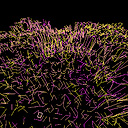
City Maze
City Maze is an agent-based city simulation prototype. The player controls a city of sim creatures.
Players may place residential, industrial, entertainment and defense buildings. When sims enter these buildings, they rest, produce income, improve their mood or defend against raider attacks.
Happy, safe, rested sims will multiply and produce income. Miserable, threatened, tired sims will get fed up and leave the city.
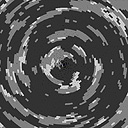
Большая утечка по Doom Eternal: список уровней, инфа о боссах и сюжетные подробности
Конечно, на работу это влияло двояко. С одной стороны, у каждой группы была большая свобода действий и условная независимость от других. С другой – временами им приходилось напоминать, что все это должно сложиться в единый проект. У новичков в индустрии, для которых Spore была первым проектом, сложилось впечатление в духе «Вау, создание игр – это полный бардак».
Даже когда команды собирали демо, чтобы продемонстрировать прототип, он впечатлял – хотя бы потому, что все работало, – но при детальном изучении становилось очевидно: до состояния полноценной игры Spore еще очень далеко.
Maxis
Maxis Software was an American video game company that served as one of the four major labels of Electronic Arts that was responsible for the development of Spore and its spinoffs, in addition to similar simulation-based games, such as SimCity, and among the best-selling computer games, The Sims.
Most Maxis titles were simulation-based, though none were considered traditional simulations. Maxis founder Will Wright likened them to "digital playgrounds". Maxis has also released games developed by other production houses, such as A-Train, sometimes with less than stellar results.
NetCity
NetCity is a programmable simulator used to explore the evolution of complex behavior from simple components.
User-defined nodes can be set to emit signals and move, or shrink and grow in when a signal is received.
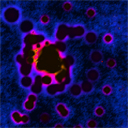
ParticleMan
ParticleMan simulates gravitational attraction between particles in a cloud. This system was used to study such gravitational dynamics as orbits, nebula formation, star formation and particle streams from sources like pulsars and black holes.
- Particles — point masses which interact with each other
- Gravity Wells — fixed point masses which attract or repel particles(depending on magnitude, which can be negative), but do not move or change mass without user input
- Particle Guns — sources that spit particles out at a given angle and velocity
- Gravity Wells and Particle Guns may only be placed on the green grid in the z=0 plane.
- The Iso Surface — an isosurface geometry object derived from the positions and masses (which act as field strengths) of the particles.
With particle-particle interactions off, you can create some elaborate streams of particles using the Particle Gun and Gravity Well objects.
Play with physics controls to create different kinds of gravitational simulations. High fusion rates can be used to simulate star birth in collapsing nebulae, for example and low fusion rates can be used to simulate interaction between stars in a galaxy.
No Man`s Sky была ужасной игрой, а теперь фанаты счастливы и благодарят разработчиков
Кто такой maxis в spore

Play with our Prototypes
Spore has been a huge undertaking. Along the way we ended up exploring countless design directions in gameplay, simulation and user interface.
One of the ways in which we explore possible design directions is by building simple, playable prototypes that we can play around with to get a sense for a particular system.
Usually these prototypes are never seen by the public, but we thought some of the more intrepid players out there might enjoy playing around with a few of our early Spore prototypes. Keep in mind these are not tested, supported or even easily explained.
EA TOOLS & MATERIALS END USER LICENSE
Electronic Arts Inc, and its subsidiaries, affiliates and licensors (collectively, 'EA') grants you a non- transferable non-exclusive license to download and/or install and use one copy of the software tool ("Tool") and/or materials ("Materials") (collectively the "Tools & Materials") solely for your personal noncommercial use in connection with EA's products, in accordance with the terms below.
EA owns all of the rights, title and interest in the Tools & Materials. You may not alter any of EA's trademarks or logos, or alter or remove any of EA's trademark or copyright notices included in or with the Tools & Materials or EA's products. Your right to use Tools & Materials is limited to the license grant above, and you may not otherwise copy, display, distribute, perform, publish, modify, create works from, or use any of the Tools & Materials. Without limiting the preceding sentence, you may not modify, reverse engineer, disassemble, license, transfer, distribute, create works from, or sell the Tool, or use the Tools & Materials to further any commercial purpose. Without limiting the foregoing, you may not use the Tools & Materials to promote another product or business, or on any site that operates or promotes a server emulator.
You may include materials created with the Tools & Materials on your personal noncommercial website for the noncommercial benefit of the fan community for EA's products and provided that if you do so, you must also post the following notice on your site on the same web page(s) where those materials are located: "This site is not endorsed by or affiliated with Electronic Arts, or its licensors. Trademarks are the property of their respective owners. Game content and materials copyright Electronic Arts Inc. and its licensors. All Rights Reserved." You will not represent that your site is endorsed or approved by or affiliated with EA or our licensors or that any other content on your site is endorsed or approved by or affiliated with EA or our licensors.
THESE TOOLS & MATERIALS ARE PROVIDED "AS IS" WITHOUT ANY WARRANTIES OF ANY KIND, EXPRESS OR IMPLIED. EA SPECIFICALLY DISCLAIMS ANY WARRANTIES OF FITNESS FOR A PARTICULAR PURPOSE, MERCHANTABILITY AND NONINFRINGEMENT.
ANY USE YOU CHOOSE TO MAKE OF THESE TOOLS & MATERIALS IS UNDERTAKEN BY YOU ENTIRELY AT YOUR OWN RISK. EA DOES NOT WARRANT THAT THESE TOOLS & MATERIALS WILL NOT CAUSE DAMAGE TO YOUR COMPUTER SYSTEM, NETWORK, SOFTWARE OR OTHER TECHNOLOGY.
EA WILL NOT PROVIDE SUPPORT FOR THESE TOOLS & MATERIALS. PLEASE DO NOT CALL OR SEND EMAIL TO EA CUSTOMER SUPPORT REGARDING THESE TOOLS & MATERIALS, AS EA WILL NOT BE ABLE TO ANSWER THESE INQUIRIES.
IN NO EVENT SHALL EA BE LIABLE FOR ANY DIRECT, CONSEQUENTIAL, INCIDENTAL, SPECIAL, PUNITIVE OR OTHER DAMAGES WHATSOEVER, ARISING OUT OF OR RELATED TO THIS LICENSE EVEN IF EA HAS BEEN ADVISED OF THE POSSIBILITY OF SUCH DAMAGES.
EA RESERVES THE RIGHT TO DISCONTINUE THE AVAILABILITY OF THESE TOOLS & MATERIALS, OR MODIFY THEM, AT ANY TIME, WITHOUT OBLIGATION TO ANYONE.
At EA's request, you agree to defend, indemnify and hold harmless EA from all liabilities, claims and expenses, including attorneys' fees, arising from any breach of this License by you and/or your use or misuse of the Tools & Materials.
EA may make the Tools & Materials available at its site(s) located in the United States and/or Canada and/or the European Union. You are solely responsible for knowing and complying with all federal, state, and local laws that may apply to your use of Tools & Materials in your own locale. By downloading any Tools & Materials, you warrant that you are not located in any country, or exporting the Tools & Materials to any person or place, to which the United States and/or Canada and/or European Union or its member countries has embargoed goods.
EA may revoke or terminate this license at any time, for any reason or no reason, in its sole discretion. Upon termination, you must destroy or return to EA all Tools & Materials. This License is governed by United States Copyright and California law (without regard to conflicts of law), and is the entire agreement between EA and you regarding the Tools & Materials.
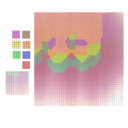
History [ ]
Early Games [ ]
Maxis was founded in 1987 by Will Wright and Jeff Braun in order to bring their first creation, SimCity to home computers, eventually becoming one of the most successful computer games of all time. This spawned the SimCity series, which includes SimCity 2000, SimCity 3000, SimCity 4 and the reboot SimCity. Following the success of the SimCity franchise, the company began to make other Sim- games, only a few of which were successful. Because of this, Electronic Arts (EA) completed its acquisition of Maxis on July 28, 1997.
The Sims [ ]
The Sims released in 2000 became Maxis' greatest hit, eventually becoming the most successful video game of all time, leading on to include four highly successful sequels as well dozens of expansion and stuff packs. However, since 2006, the franchise is developed by The Sims Studio, while Maxis itself began to concentrate on it's latest project: Spore.
Spore [ ]
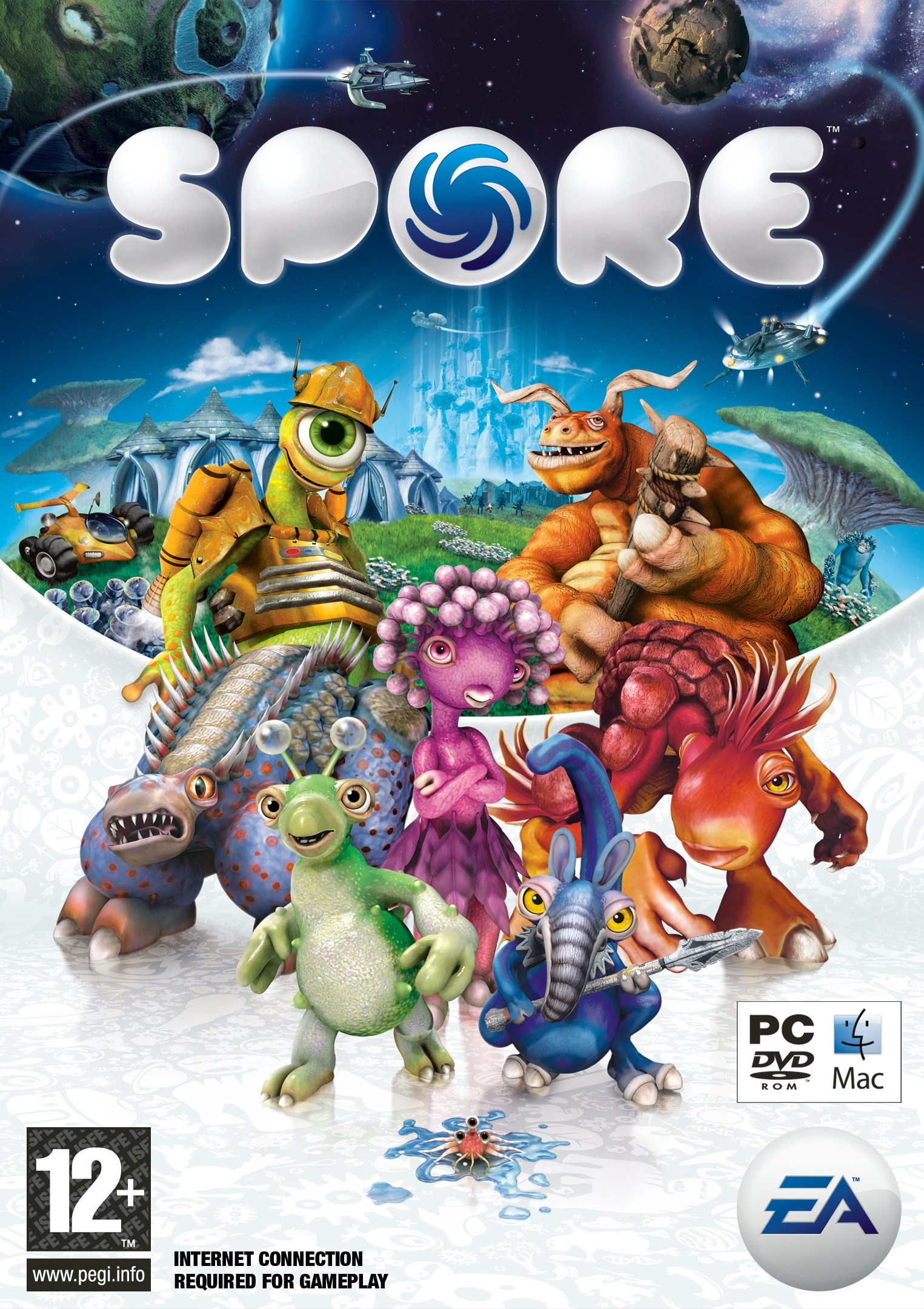
In March of 2005, Will Wright, head of Maxis, showed off Spore publicly for the first time. He did so in a GDC presentation vaguely titled "The Future of Content". No public mention of Spore being shown was announced prior to the presentation, taking most spectators by surprise. Initially, after the presentation, no images of Spore were available, but soon after someone leaked images of Spore online, in a viral marketing campaign over the next several months.
Spore's Next public appearance was at E3 in May. This time the showing of the game was announced, but the game was to be shown behind closed doors at the conference. Spore was eventually released in September 2008, and, though it was a commercial success, it was the subject of harsh criticism and the target of a consumer protest against Electronic Arts over the use of a modified version of SecuROM, a DRM software developed by Sony DADC, that originally required online authentication every ten days and imposed a limit on how many computers are able to authenticate the product key for a single copy of the game.
Maxis went on to create Spore Galactic Adventures, as well as stuff packs and spin-offs to the series, but entered a hiatus in 2010 for unknown reasons.
Post-Hiatus [ ]
Maxis' hiatus ended in 2012 when they announced a reboot to the SimCity series which was released in 2013. The game was met with mixed reviews, not the least of which was due to many, many issues at launch that took multiple patches to fix. In 2012, Maxis became one of EA's four primary labels and was merged with The Sims Studio, once again becoming responsible for new Sims games, including the highly anticipated The Sims 4, released in June of 2014. In March of 2015, Maxis closed its doors and merged with Electronic Arts.
Gaslight
Gaslight simulates a process called stochastic, self-propagating star formation (SSPSF.)
Interstellar gas and dust begin to collapse under the force of its own gravity. This gives rise to regions of dense material that eventually give rise to stars.
When the stars ignite, they heat up the surrounding material, which moves away from the stars, creating more regions of increased density, which give rise to more stars, which moves more material, which creates more stars and so on.

Mac OS X Gift Pack
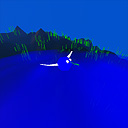
Одна игра, что правит всеми
Продюсер Spore Гийом Пьер не верил, что игру доведут до релиза:
«Когда я впервые увидел дизайн-документ в 2003, то сказал: «Удачи с этим». Я просто подумал, что у этой игры нет никаких шансов когда-либо выйти».
Но Райт прекрасно понимал, что действует вопреки логики игростроя. Чтобы немного подготовить индустрию (и мир) к анонсу Spore, он сперва рассказал о ней на профильном мероприятии Game Developers Conference, где в первую очередь собираются игровые разработчики, а не инвесторы или пресса, как на E3.
В своем докладе он поэтапно объяснял принцип работы отдельных технических аспектов Spore (вроде возможности загружать на сервер творения игроков – персонажей, здания, транспорт, ракеты, созданные в редакторе), и провел коллег через свой мыслительный процесс, который привел его к идее игры.
Spore вышла 11 лет назад и сильно опередила свое время. Там можно было все
4 сентября 2008 года EA выпустила Spore. Несмотря на высокие оценки и неплохие продажи, она так и не получила сиквела – зато со временем стала культовой.
Симулятор бога Spore даже сейчас кажется крайне амбициозным: в нем геймер проходит путь эволюции от одноклеточного организма до космической супердержавы, охватывающей целые звездные системы. Процесс при этом максимально вариативный: в одном прохождении можно вырастить расу трехголовых травоядных узурпаторов, а в следующий раз сделать, например, Республику Вайперов из Доты. И все это было уже в 2008 году – за восемь лет до анонса No Man’s Sky, единственного условного аналога Spore.
Разработка Spore сама напоминала игру в реальной жизни
Из-за деления на команды проект казался одновременно и бесконечно далеким от релиза, и почти готовым к отправке в печать.
Некоторые говорили, будто Уиллу Райту незачем доделывать Spore – он уже играл в нее, используя самих сотрудников. В штат Maxis постоянно приходили талантливые люди и яркие личности, которых Райт распределял по группам на разные задачи – и наблюдал за их взаимодействием и тем, какая игра у них получается.
Tidepool
Tide Pool represents our first steps down the path toward synthesizing our ideas into a playable game.
Tide Pool set the stage for the later, more recognizably Spore-like prototypes SPUG and GonzagoGL.
Tide Pool combines a forest fire simulator from BIOME with the terrain and water simulation from WaterBoy and the flocking system from Crowd in a fire fighting mini game.
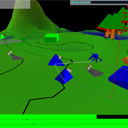
Waterboy
WaterBoy is a fluid dynamics simulator designed to explore the behavior of large bodies of water on uneven terrain.
Developed in 2002, WaterBoy also demonstrates early application of modern graphics technology, including environment cube mapping and custom shaders.
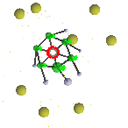
TextureBox
The TextureBox prototype demonstrates the application of simple paint-program-style tools to dynamic cellular automata systems like Biome and CellCulture.
Brushes apply color to a dynamic canvas which then propagates those colors using cellular-automata-based rules.

GonzagoGL
GonzagoGL is an OpenGL-based prototype of the Spore Creature game.
Similar to SPUG, it places the player in an environment with predators, prey, shelter and vegetation. GonzagoGL advances the SPUG model to include higher quality terrain and a greater emphasis on gameplay.
GonzagoGL was the final gameplay prototype developed for Spore.
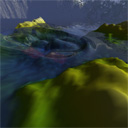
Геймергейт начался 5 лет назад. Этот скандал влияет на игровую индустрию до сих пор
При этом Spore описывалась как проект с Т-образной структурой. Пройдя все этапы развития, игрок мог по своему желанию вновь перемещаться на низшие уровни, меняя мир в целом. Космический этап же позволял, например, пройти весь путь заново на чужой планете, в том числе загруженной другим игроком. Иными словами, никакой линейной структуры – игрок перемещается по этапам бесконечности.
Cell Culture
Cell Culture is a SimCity-like simulation of the spread of life and culture across a planetary surface.
The planet is represented as a grid of cells. Each cell has several variables describing the amount and kind of life present at that location.
Life grows and spreads from cell to cell based on these variables. The more favorable the conditions, the faster the rate of growth and spread.
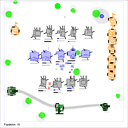
Crowd
Crowd is a SimCity 4 prototype developed by the Spore prototyping team.
The player controls a neighborhood of city blocks. Sims wander the city looking for residential, commercial or industrial buildings where they can work, rest or recreate.
The player may zone the unzoned (gray) city blocks to attract sims of a given type. Zoned buildings also emit traffic vehicles, which can be controlled with traffic lights.
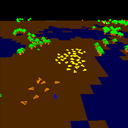
SPUG is a tunable gameplay prototype for the Creature level of Spore.
The player controls an avatar creature on a simple planetary terrain where they may hunt prey, evade predators, eat, rest and level up their stats.
No limitations are placed on leveling up or cheating stats. This tool was intended to give designers the opportunity to explore different economies for the creature game, so limitations on power ups and level ups are self-imposed.

А игра ли это вообще?
Либранде говорит, что Spore всегда недоставало определенности:
«У был очень сильный концепт, но не было сильного геймдизайна, чтобы его подкрепить. То есть того, чем игрок, собственно, занимается. Если посмотреть на редактор существ в отрыве от игры, он чудесен, глядя на него хочется улыбаться. [. ] Но если рассматривать игровые механики: в чем цель, как игроки будут относиться к прокачке, что делать с развитием умений, все традиционные аспекты игр… Многое из этого просто отсутствовало».
Действительно, если смотреть на Spore именно как на видеоигру, она работает совсем не так, как должна – в ней прежде всего весело создавать, менять, развивать существ и объекты, а не играть, потому что игровой процесс здесь крайне условен. Нужно съесть достаточное количество микроорганизмов, развить технологии города, построить первый космический двигатель – по сути, если бы в Spore можно было свободно переключаться между уровнями развития с самого начала, ничего бы не изменилось.
Но у игры была своя особенная магия – все эти нелепые существа, созданные тобой в редакторе, летают на не менее нелепых космических кораблях, обращают соседей в свою веру, захватывают города и планеты. Просто потому что могут. Именно отсутствие внятных целей превращает Spore в ультимативную песочницу – в ней весело даже просто создавать странных монстров в редакторе.
Не менее интересно исследовать то, что игра создавала сама. В 2008 году удивляло само существование большой игры, которая во всем полагается на процедурную генерацию, пусть и не так сильно, как позже это будет реализовано в уже упомянутой No Man’s Sky.
«Было удивительно видеть, что процедурная генерация использовалась для стольких вещей. Система генерации кожи, все процедурно созданные атрибуты персонажей, системы наложения слоев анимации, даже полноценные системы процедурно создаваемой музыки – мы даже забывали, что в комнате по соседству над чем-то работали музыканты».
Естественно, технология была ограничена. Опытный игрок может увидеть, как алгоритмы повторяются: например, одно и то же дерево встречается несколько раз, пусть и в разных размерах. Кейт также рассказала, что спрятала несколько пасхалок: при исследовании космоса можно встретить планету-куб или достоверную копию Земли, сделанную на основе фото со спутников.
Земля, спрятанная Комптон
На релизе Spore получила довольно высокие оценки от прессы, но и немало критики от игроков – все из-за того, что Уилл Райт слишком многое обещал, и ожидающие проект игроки вообразили игру-мечту. В индустрии такое часто случается с творцами, позволяющими своим амбициям затмить реальность: Питер Молинье собирался выращивать в реальном времени деревья в Fable (не смог), Тодд Говард хотел сделать идеальную симуляцию жизни NPC в TES: Oblivion (это ломало игру), а Шон Мюррей рассказывал байки о красотах той самой процедурной генерации No Man’s Sky (до выхода патчей она выглядела нелепо).
Отличие игры Райта в том, что он все-таки выполнил задуманное, сделал ультимативный симулятор бога, который до сих пор не может превзойти никто. Но при этом лишил Spore возможности стать нормальной игрой в классическом понимании, сместив баланс в сторону творческой свободы. С другой стороны, иначе мы бы и не вспоминали о ней спустя столько лет.
BIOME
BIOME is a programmable cellular automata simulator that allows users to develop simple "SimCity-like" grid simulations.
The grid-simulations in SimCity were inspired by Conway's "Life" program, which produces amazingly intricate patterns from simple rules
BIOME uses a language based on chemical stoichiometry, the notation system used to describe chemical reactions. Cells in a BIOME simulation change state the same way that chemicals change when exposed to other chemicals
Systems such as this can be used to simulate phenomena such as forest fires, disease epidemics, animal migration patterns and crystallization
BIOME supports both rectangular and spiral cellular automata configurations. The spiral configuration was used to study stochastic, self-propagating star formation (the process whereby the ignition of a star promotes the creation of more stars) on the galactic scale.
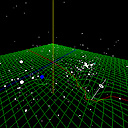
Contents
Читайте также:

